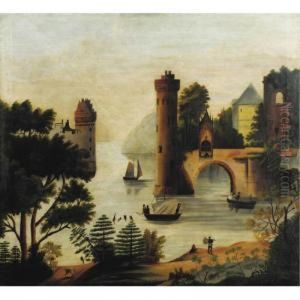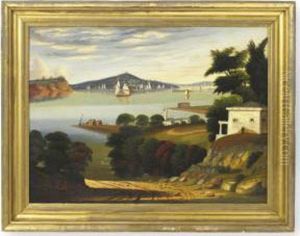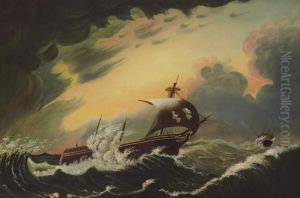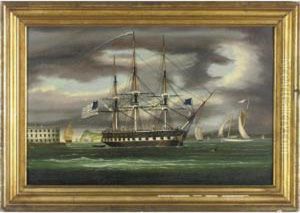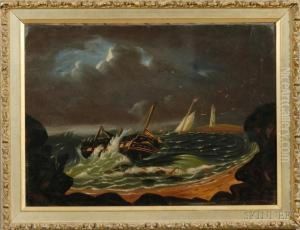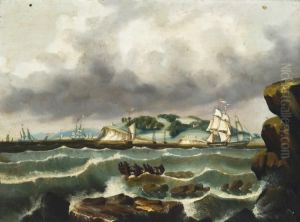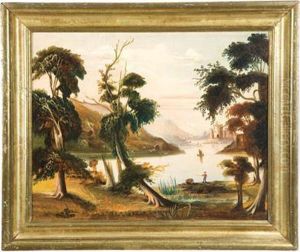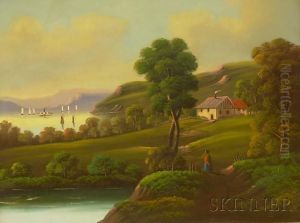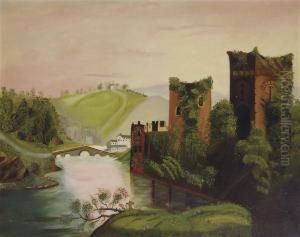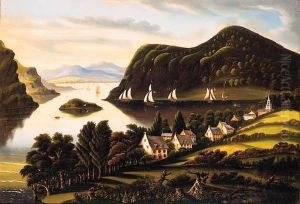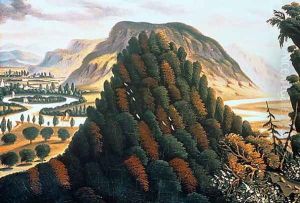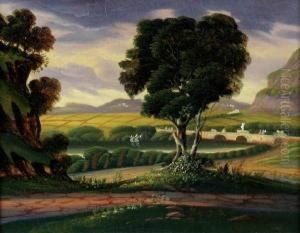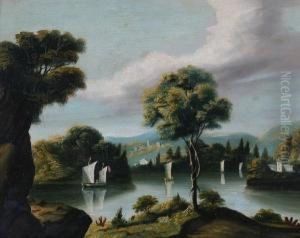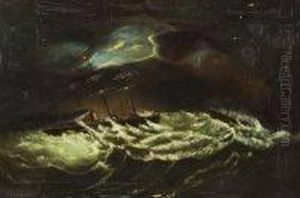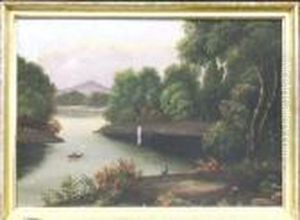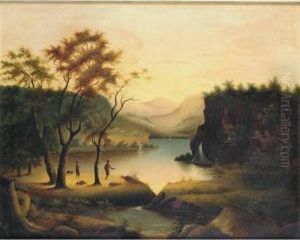Thomas Chambers Paintings
Thomas Chambers, often referred to as 'America's first modern', was an English-born landscape and marine painter, who became one of the most successful artists in mid-19th century America. Chambers was born in 1808 in Whitby, Yorkshire, England. He was the son of a merchant sailor and as such, was exposed to the sea and maritime life at an early age, which would later greatly influence his artistic subjects.
Chambers studied painting in London, possibly under George Morland, before immigrating to New Orleans around 1832. He traveled extensively along the East Coast of the United States, living in cities such as Boston, New York, and Albany, which provided him with varied landscapes and seascapes that became the subjects of his works. Chambers was known for his bold use of color and dramatic rendering of waves, cliffs, and ships, which were often criticized for their lack of realism but later celebrated for their avant-garde qualities.
Despite being considered self-taught and working outside the mainstream art community, Chambers enjoyed commercial success during his lifetime. His paintings were sought-after by a middle-class audience who appreciated his decorative style and could afford his reasonably priced works. However, after his death in 1869, Chambers' contributions to the art world were largely forgotten.
It wasn't until the mid-20th century that Chambers' work was rediscovered, leading to a reassessment of his place in American art history. Today, Thomas Chambers is recognized for his distinctive style that prefigured both the Hudson River School and later impressionist movements, making him an important figure in the development of American landscape and marine painting. His works are now included in the collections of major museums, including the Metropolitan Museum of Art in New York and the Smithsonian American Art Museum in Washington, D.C.

